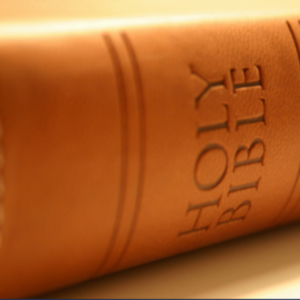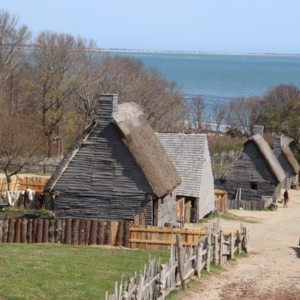In schools across America, the week of Thanksgiving often includes short lessons on a group of people referred to as the Pilgrims. For many, when the term Pilgrim is mentioned, images of men with big black hats in black shoes with big shiny buckles come to mind. Sadly, while this seems like a minor misconception, many other misconceptions surrounding the Pilgrims run rampant. The majority of Americans do not know the true story of the Pilgrims. Worse, what is taught in the classroom, depicted in the media, and written in articles online is often far from the truth. Sadly, much of the Pilgrim’s story is missing. It may come as a surprise to know that we have three primary sources that we can turn to which tell us the full Pilgrim story: William Bradford’s Of Plymouth Plantation and Edward Winslow’s Mourt’s Relation and Good Newes from New England.
What is a Primary Source?
The Reference and User Services Association, a division of the American Library Association, defines a primary source as, “the evidence of history, original records or objects created by participants or observers at the time historical events occurred or even well after events, as in memoirs and oral histories.” Simply put, a primary source is a firsthand account of events that took place.
William Bradford was a firsthand eyewitness and a member of the Separatist church that eventually came to the New World on the Mayflower. Without Bradford’s journal, we would know very little about the Pilgrims. His journal, which is titled, Of Plimoth Plantation, and Edward Winslow’s works, Mourt’s Relation and Good Newes from New England, are foundational documents we can turn to in our quest to understand who the Pilgrims were and why the Pilgrims came to America. Bradford’s journal is a wealth of key information, such as letters to his pastor, John Robinson, his correspondence with the Merchant Adventurers Company, the treaty that was formed between the settlers and the neighboring Wampanoag tribe, and the Mayflower Compact, which was integral in the writing of the Constitution of the United States of America.
Watch this video to discover how Bradford’s journal was miraculously preserved and uncovered at a time when America was awakening to the need to preserve her history.
To better understand why the Pilgrims came to America, we must go back to the time of King Henry VIII.
King Henry VIII Unwittingly Changed the Course of History
It is common knowledge that King Henry VIII had many wives–six, in fact–but most do not know that Henry’s desire for divorce would place the Word of God in the hands of the people. Up until this point, the Bible was available in Latin. Often, only priests in the Catholic church owned Bibles and could read them. When King Henry VIII decided to break from the Catholic church and create his own church, he declared that the Bible would be read in English. It was 1539 when King Henry VIII authorized the printing of the Bible in English. This version of the Bible was called The Great Bible. King Henry had this version of the Bible distributed to all the churches of England. For the first time, people could hear and read the Word of God in plain English.
After King Henry VIII died in 1547, his son Edward became king. Edward died only a few short years later at age 15. His sister, Mary, became queen in 1553. Mary did not like that her father had divorced her mother, so she made the Roman Catholic Church the official church of England again. She burned the bibles that were written in English, and bible scholars were forced to flee England. Many of them fled to Geneva, Switzerland, where they labored diligently to make a translation of the Bible in English that was divided into chapter and verse, and had helpful footnotes. This bible was called The Geneva Bible. When Queen Mary died in 1558, her sister, Elizabeth, became queen and welcomed the reformers back. The Church of England was once again the official church. Elizabeth died in 1603, and King James assumed the throne because he was her closest relative.
It is this King James whom the King James Bible is named after. This English translation of the Bible was released in 1611. King James had successfully ensured “the translation’s scholarly and nonpartisan character.” It became the standard English bible until the early 20th century.
The Separatists Flee England

Bradford recognized that through their reading of the bible and their meeting together, “many became enlightened by the Word of God and had their ignorance and sins discovered unto them, and began by his grace to reform their lives and make conscience of their ways …”
Although King James continued Queen Elizabeth’s Protestant legacy, he made it a crime to attend any church except the Church of England, and everyone had to attend. Additionally, King James outlawed the Geneva Bible. At the time, there were two groups of people who wanted to change the church. The Puritans remained a part of the Church of England and worked to “purify” it from within. The Separatists felt there was no hope for the church, so they separated themselves from the Church of England and met in secret.
In his journal, William Bradford wrote, “So many, therefore, of these professors as saw the evil of these things in these parts, and whose hearts the Lord had touched with heavenly zeal for His truth, they shook off this yoke of antichristian bondage, and as the Lord’s free people joined themselves (by a covenant of the Lord) into a church estate, in the fellowship of the gospel, to walk in all His ways made known, or to be made known unto them, according to their best endeavors, whatsoever it should cost them, the Lord assisting them.”
Additionally, Bradford recognized that through their reading of the bible and their meeting together, “many became enlightened by the Word of God and had their ignorance and sins discovered unto them, and began by his grace to reform their lives and make conscience of their ways …”
The decision to break the law did not come without consequences. Bradford lamented, “They were hunted and persecuted on every side until their former afflictions were but as flea bitings in comparison. Some were clapped into prison, others had their houses watched night and day, and escaped with difficulty; most were obliged to fly, and leave their homes and means of livelihood … yet these and many other afflictions, they were able to bear by the assistance of God’s grace and spirit.”
Their first attempt to leave England was met with further hardship. They had hired an English ship to give them passage, but on the date and time they were scheduled to depart, the captain betrayed them. They were stripped of their money, books, and other possessions. Some were sent to court and/or prison.
The following spring, they made a second attempt to escape to Holland from England. This time, they arranged transport with a Dutch ship captain. The women were sent ahead in a small boat with the children, while the men journeyed by land. The men were able to board the ship, but the women became trapped in low tide. When a large company of soldiers came into sight, the ship set sail, leaving the women behind. The women and children were imprisoned for a time, then finally released to go to their husbands in Holland.
Called to America
The Pilgrims indeed found religious freedom in Holland. However, the years in Leiden wore on them. They found their children not only becoming influenced by the Dutch culture, but the labor in the factories necessary to sustain their living caused their children to age before their time. The Pilgrims wanted to share the Gospel, so they saw themselves as stepping stones to further its reach.

When the Pilgrims decided to migrate to the New World, they received the patent they needed to make the journey and settle in northern Virginia.
America or Guyana?
The Pilgrims considered beginning anew in either Virginia or Guyana. Despite the appeal of Guyana’s plentiful resources, the Pilgrims chose to migrate to the New World. They received the patent they needed to make the journey and settle in the northernmost parts of Virginia.
Why Did the Pilgrims Come to America?
The Pilgrims were aware their chances of survival were not good. Bradford lists the risks:
- The land was wild, unsettled, uncleared, and uncivilized. They could be harmed by beasts or men.
- The voyage was long and dangerous.
- The New World could subject them to famine, disease, infection, thirst, or violent death.
- The trip was very expensive and would require funding which they would have to pay back.
William Bradford journaled:
“It was answered, that all great and honorable actions are accompanied with great difficulties, and must be both enterprised and overcome with answerable courages. It was granted the dangers were great, but not desperate; the difficulties were many, but not invincible. For though there were many of them likely, yet they were not certain; it might be sundry of the things feared might never befall; others, by provident care and the use of good means, might in a great measure be prevented; and all of them, through the help of God, by fortitude and patience, might either be borne or overcome. True it was, that such attempts were not to be made and undertaken without good ground and reason; not rashly or lightly, as many have done for curiosity or hope of gain, etc. But their condition was not ordinary; their ends were good and honorable; their calling lawful, and urgent; and therefore they might expect the blessing of God in their proceeding. Yea, though they should lose their lives in this action, yet might they have comfort in the same, and their endeavors would be honorable.”
Despite the risks, it is clear from Bradford’s account that the Pilgrims were going to go to America out of obedience to God to live.
Works Cited:
“Primary Sources on the Web: Finding, Evaluating, Using.” Reference & User Services Association (RUSA), 30 Sept. 2016, https://www.ala.org/rusa/sections/history/resources/primarysources.
“English Bible History.” GreatSite.com, 29 May 2019, https://greatsite.com/english-bible-history/. Retrieved September 28, 2022
Lindbuchler, R. (1998, November 16). Queen “Bloody” Mary I Tudor of England. Retrieved September 28, 2022, from King’s College Department of History:
https://departments.kings.edu/womens_history/marytudor.html
The Editors of Encyclopedia Britannica. “King James Version.” Encyclopædia Britannica, Encyclopædia Britannica, Inc., 5 Sept. 2022, https://www.britannica.com/topic/King-James-Version. Retrieved September 28, 2022
Bradford, W. (1998, 2002). Of Plymouth Plantation: Bradford’s History of the Plymouth Settlement 1608-1650. San Antonia, Texas: Vision Forum.
Bradford, W. (n.d.). The Project Gutenberg eBook of Bradford’s history of ‘Plimoth Plantation”. Retrieved November 10, 2022, from https://www.gutenberg.org/files/24950/24950-h/24950-h.htm, marker 17
Bradford, W. (n.d.). The Project Gutenberg eBook of Bradford’s history of ‘Plimoth Plantation”. Retrieved November 10, 2022, from https://www.gutenberg.org/files/24950/24950-h/24950-h.htm, marker 21
7 Bradford, W. (n.d.). The Project Gutenberg eBook of Bradford’s history of ‘Plimoth Plantation”. Retrieved November 10, 2022, from https://www.gutenberg.org/files/24950/24950-h/24950-h.htm, marker 32
Bradford, W. (n.d.). The Project Gutenberg eBook of Bradford’s history of ‘Plimoth Plantation”. Retrieved November 10, 2022, from https://www.gutenberg.org/files/24950/24950-h/24950-h.htm, marker 33
Bradford, W. (n.d.). The Project Gutenberg eBook of Bradford’s history of ‘Plimoth Plantation”. Retrieved November 10, 2022, from https://www.gutenberg.org/files/24950/24950-h/24950-h.htm, marker 37
Bradford, W. (n.d.). Sundry Reasons for the Removal from Leyden. William Bradford (1590-1657). sundry reasons for the removal from Leyden. Stedman and Hutchinson, eds. 1891. A Library of American Literature: An Anthology in 11 volumes. Retrieved November 9, 2022, from https://www.bartleby.com/lit-hub/a-library-of-american-literature/sundry-reasons-for-the-removal-from-leyden/


